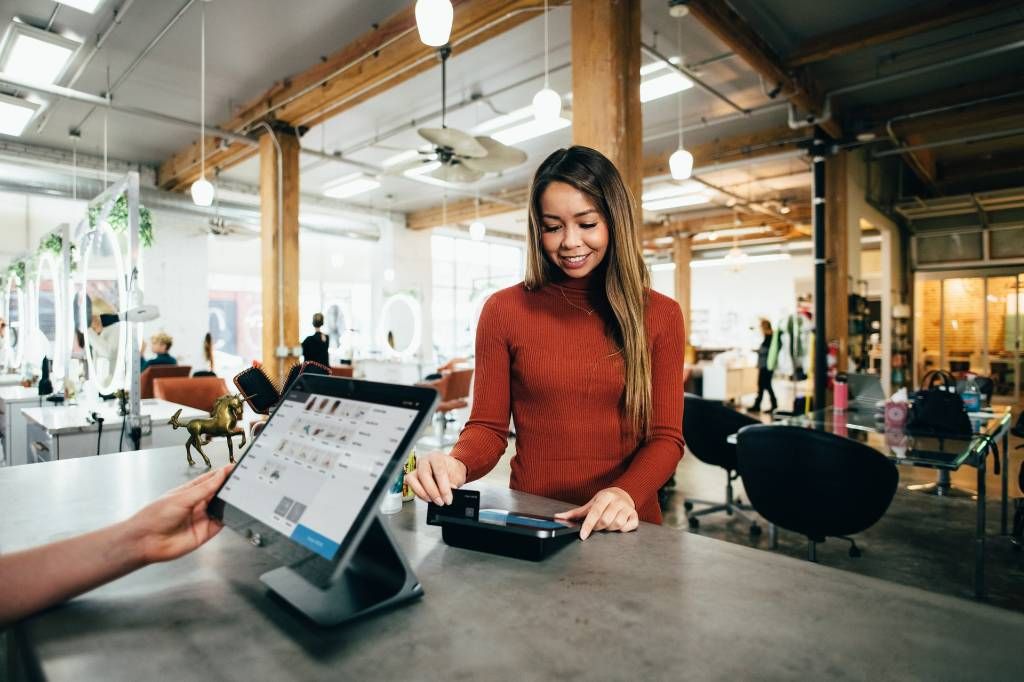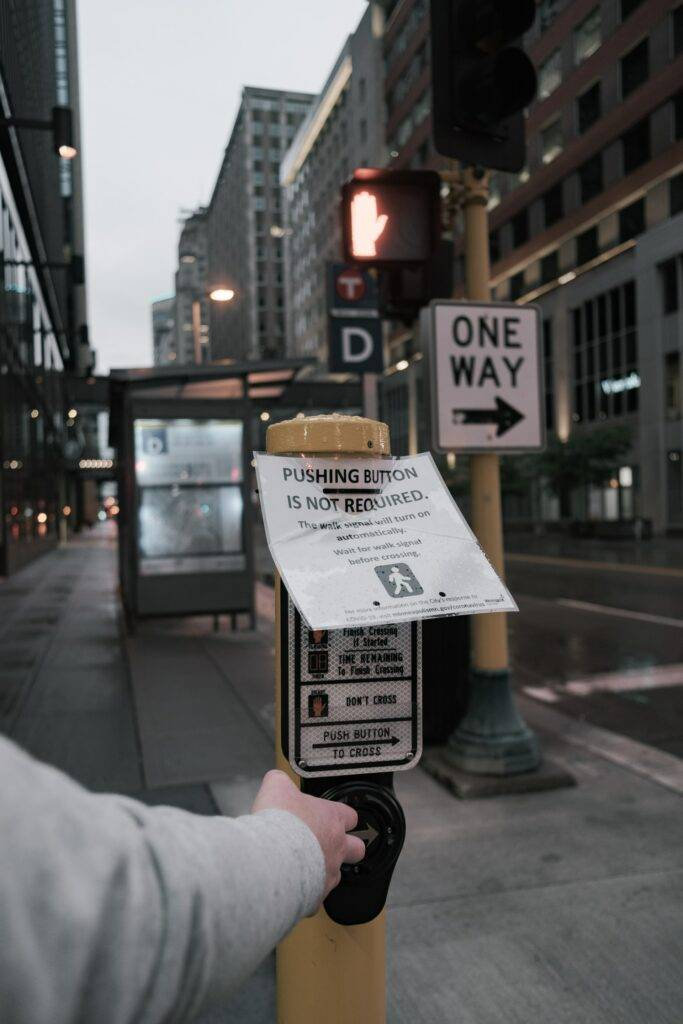5 Trends That Will Impact Customer Experience in 2021

Table of Contents
Location-based businesses have been left in a precarious position thanks to the COVID-19 pandemic. While some retailers have been able to take their business online and continue to generate revenue, the majority of offline-first and venue-based businesses have been unable to offer a digital experience and have suffered greatly.
Customer experience, or CX, has always been a vital part of any profitable business, but it’s even more important with the current economic climate. With research showing that customers are willing to spend a 16% price premium for a great customer experience, investing in your CX strategy is a vital part of helping your bottom line rebound as your stores reopen.
It’s not just about the digital customer experience either. In the coming months, offline-first businesses are likely to begin treating CX as a key business factor as we welcome customers back into our venues. Let’s take a closer look at how the COVID-19 pandemic has impacted customer expectations, and the customer experience trends we’re expecting to see in the coming months.
Customer Experience as a Differentiating Factor
An estimated 80% of customers are more likely to make a purchase from brands that provide a personalised, thoughtful customer experience in-store. When you consider that your customers will have been shopping online more during the pandemic, and the usual retail experience has been disrupted, this statistic is even more telling of how much customer experience matters.
With offline retail able to operate again, consumer expectations are higher than ever before. Your customers aren’t just looking to make a purchase, but they’re looking to experience a slice of normality that they’ve not been afforded for well over a year.
Customer experience is going to become a key differentiating factor between businesses as the world reopens. As offline retail, hospitality, and other venues will be working to encourage customers to visit stores with traditional incentives like sales and discounts, customer experience will be the deciding factor between which stores your customers choose to visit.
For banks and other financial institutions, COVID-19 has accelerated the shift to digital banking services from challenger brands. High-street banks and the wider financial services sector will need to address customer service and customer engagement issues to win back loyal customers.
So, your customer experience strategy needs to be tailored to offer customers something unique to your brand, as this will help your company to stand out from the competition. Whether you decide to introduce cash-free locations or even online courses in your area of expertise, you need to show customers that you can offer more than just your products.
Improving Employee Satisfaction to Drive CX
Employee satisfaction and customer experience go hand in hand. Research suggests that companies that invest in employee satisfaction generate 218% more revenue per employee, which goes to show that happy employees create happy customers.
Every employee in the chain has an impact on customer experience, whether that’s your development team that builds your website, your warehouse staff that makes sure your product is organised and easy for your store staff to find, and, of course, your customer support team and other customer-facing employees.
To drive a great customer experience strategy, you need to make sure that your employees are happy and engaged at work. One of the best ways to measure employee satisfaction is, quite simply, by using surveys to ask your employees how they feel about their work. By including open and closed questions regarding how your employees feel about aspects like management, training, benefits, and support, you can understand more about how to meet your employees’ needs.
While employee satisfaction and experience has long been considered a “nice to have” factor of business rather than a necessity, research supports that companies that invest in employee experience often experience improvements in their CX too. So, as offline retail brands start developing strategies to improve CX in-store, we’re likely to see those same brands invest in employee satisfaction strategies. Even simple factors like improved training schedules have been shown to improve customer experience, so even the smallest investment can have a huge payoff.
Offline to Online Customer Journey Mapping
One of the biggest cx initiatives that brands will start doing is meticulously mapping the customer journey, and using those findings to improve the customer experience during COVID.
Creating a customer journey map will determine which brands start rebuilding themselves following their long-term closures, and which brands continue to struggle as the world reopens. Customer journey maps will help you to understand how a customer experiences your brand each step of the way, allowing you to improve on your existing touchpoints and create new ones to fill in any gaps.
Removing any friction along the customer journey will be key to improving customer satisfaction in offline retail, hospitality, and in other venues. The modern consumer values speed and convenience above all else, so customer experience trends will move towards making the customer’s journey as seamless as possible.
A great way to do this is to evaluate what rewards customers experience at each touchpoint. We’re not talking about rewards in the traditional sense, but rather the positive experiences brands can build into their customer experience strategy. Rewards are a great way to reduce friction at each touchpoint, build rapport, and most importantly, generate customer loyalty. This could be something as simple as giving your employees all the time they need to spend with a customer when they visit your location. Or, it could be complex, like an AI chatbot that customers interact with on your website, and the chat history is sent (with permission) to their nearest location so employees already know what that customer is looking for when they arrive.
So, we’re expecting to see more offline location-based businesses investing in customer journey maps, reducing friction between touchpoints, and introducing more rewards to create a great customer experience.
Contactless CX Initiatives and Feedback Solutions

Contactless CX: Pushing button is not required
With customers still being concerned about catching and spreading COVID, almost every offline business will be improving their processes to make them as safe as possible. Recent research has shown that 71% of customers will lose trust in a brand if they believe that the brand is putting profit over people. So, it’s expected that customers will want to see that stores have procedures in place to protect employees.
So, companies will be looking to implement procedures that minimise contact between employees and customers. This will likely involve policies like installing plexiglass barriers between cashiers and at customer service points, across desks, and in other areas where employees are likely to have extended interactions with customers.
The easiest way to provide contactless solutions is through the use of smartphone apps and in-store screens that can easily be sanitised between uses. By using technology as a medium of interaction, offline retail can protect employees and customers from COVID while still providing a great customer experience.
Most importantly, we’re expecting to see a rise in demand for contactless feedback solutions that help companies collect data about whether customers have had a positive experience in-store. Traditionally, these tend to be emailed to customers, but given that email has an average open rate of 21.3% many businesses will be looking towards more effective solutions.
With a feedback solution like TRACX, businesses can use contactless boards that make it easy for customers to tap their phone to give their feedback before they even leave the store.
Not only that, but with TRACX, companies can send customers feedback requests via SMS, WhatsApp, email, or web link. That way, your customers won’t forget to give you feedback, and you’ll have higher response rates that help you to more accurately understand customer experience in-store.
Capturing In-The-Moment Feedback
Location-based businesses have always struggled with collecting customer feedback, particularly prior to COVID as customers were likely to forget everything but negative feedback by the time they returned home. While businesses need negative feedback to identify unmet customer needs and understand where they need to improve, having a skewed dataset in this direction doesn’t help them to understand what’s working well, and why.
It’s not only about collecting feedback before customers can forget interactions, though - it’s also about allowing employees and managers to get real-time feedback about customer experiences. This way, businesses can understand how different factors affect customer experience, and even if certain employees are linked with lower satisfaction scores.
We can’t understate how valuable real-time feedback is, either. When your business receives real-time feedback, it gives you the chance to quickly adjust your customer service and customer experience strategies. By testing these adjustments in select locations and comparing them against the average scores from other locations, these micro-adjustments can quickly add up to a more successful and efficient customer experience strategy.
That’s why we’ve designed TRACX to make it as easy as possible for you to collect in-the-moment feedback. From contactless panels that customers can tap with their phones, to stickers with QR codes that link to quick feedback surveys, you’ve got multiple ways to make sure customers let you know how they’re feeling before they leave your location.
What’s more is that managers and customer champions can receive notifications for certain feedback elements, so you can even build processes to solve negative feedback before a customer leaves the store. Understanding what problems managers can address, and having the power to solve those problems quickly can make the difference between a positive experience and a customer leaving with a negative impression of your brand.
Key takeaway
Most CX trend-spotters focus on digital experience and customer data, and the importance of this should not be overlooked. Everything is undergoing massive digital transformation, and the way we view, organise, and respond to customer feedback is no different. However, experience is everything; it’s not just interactions that happen on digital channels, it’s your physical spaces and locations too.

Tom Sutton
Co-founder, TRACX
Tom is the co-founder of TRACX, a no-code marketing platform that allows local business owners to collect customer feedback and create engaging marketing campaigns. With over 17 years of experience in entrepreneurship, product development, and marketing for businesses large and small, Tom is currently responsible for developing product and marketing strategies for TRACX.